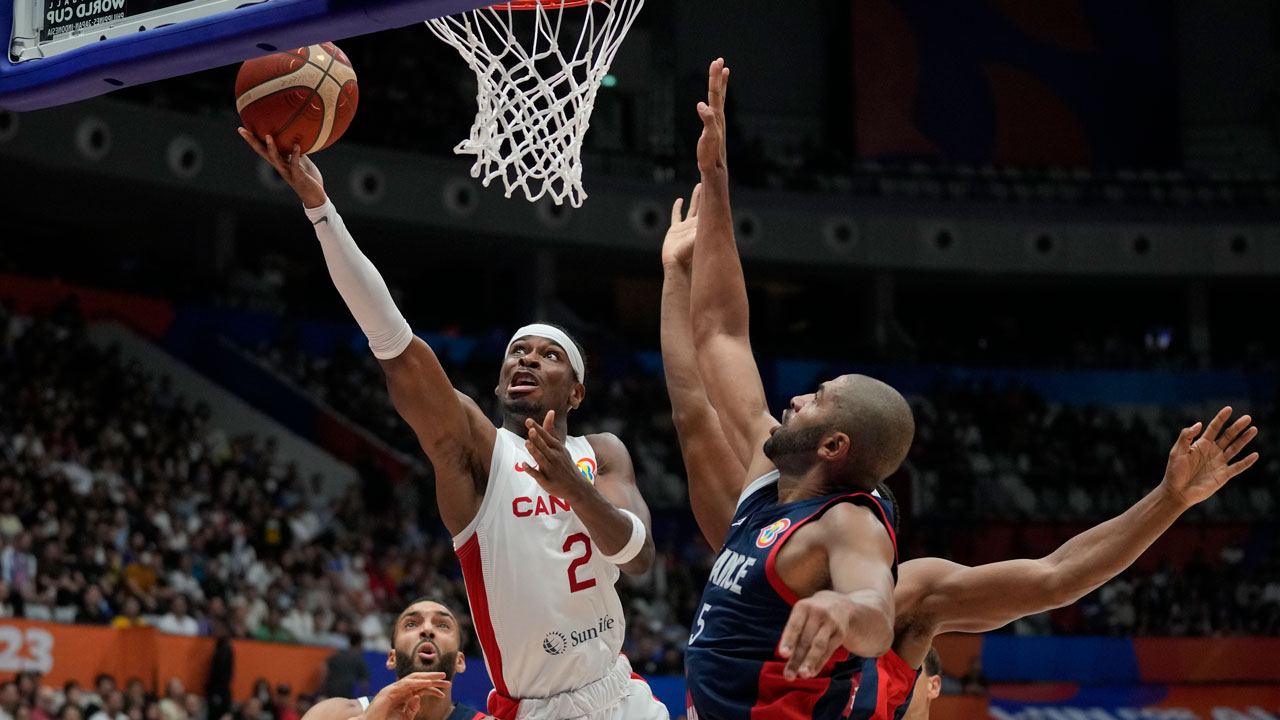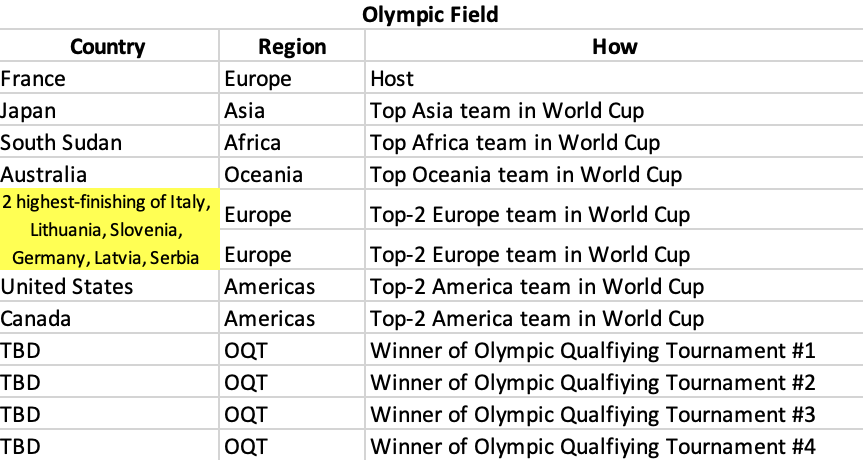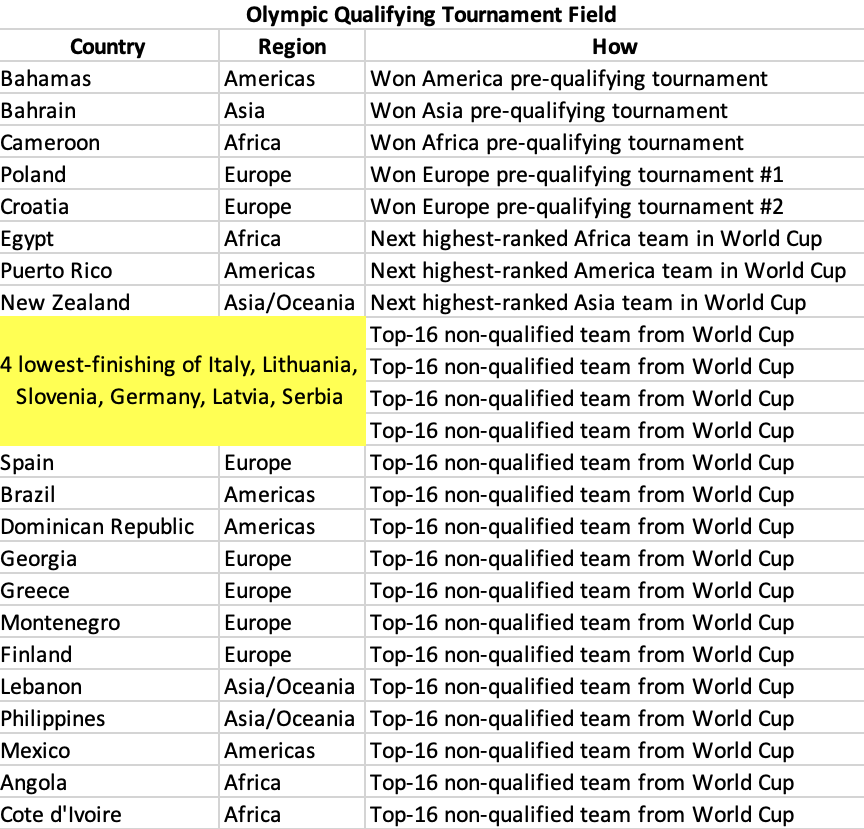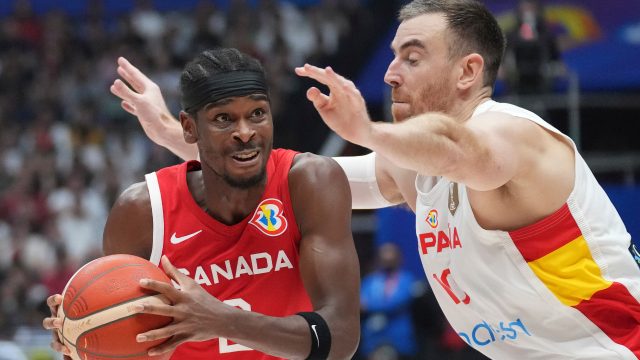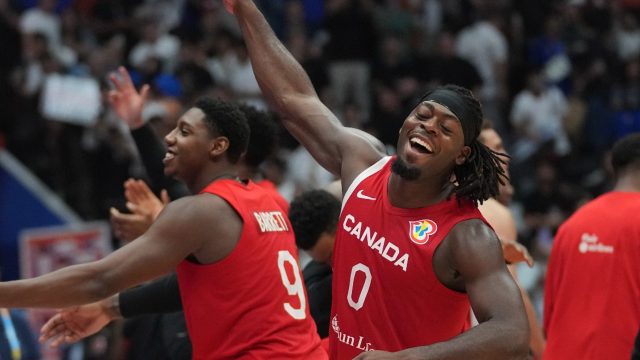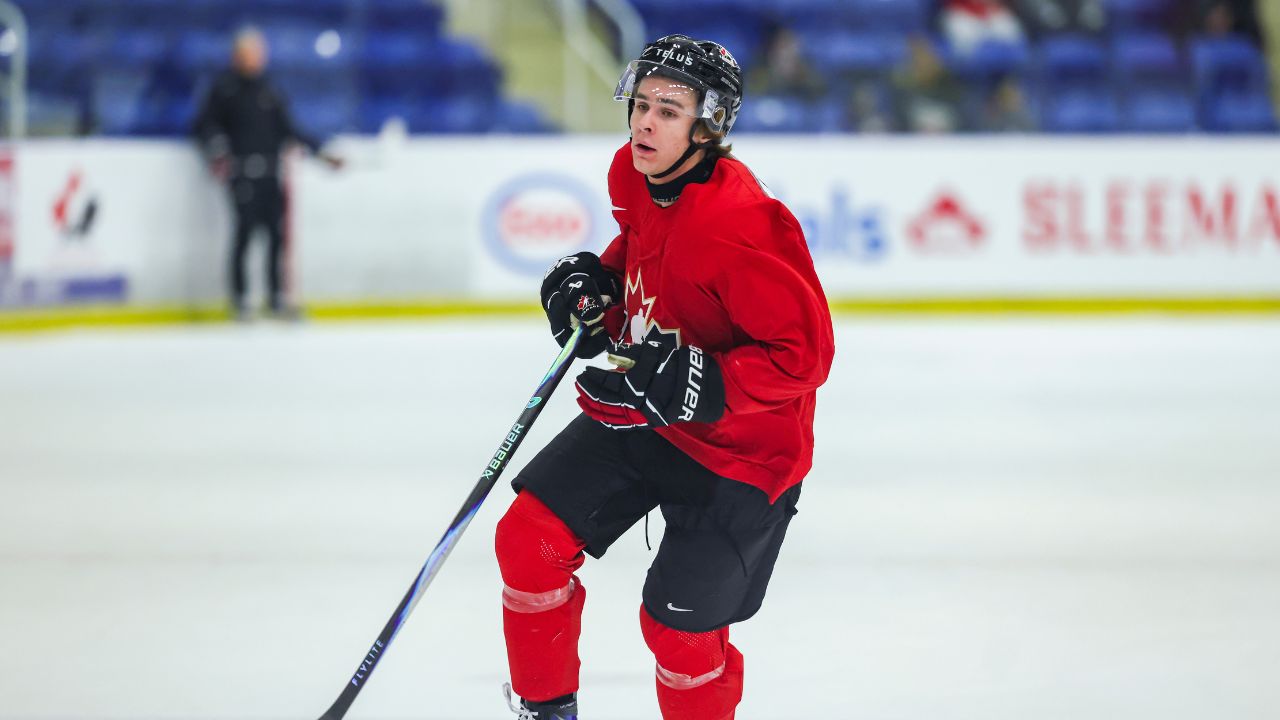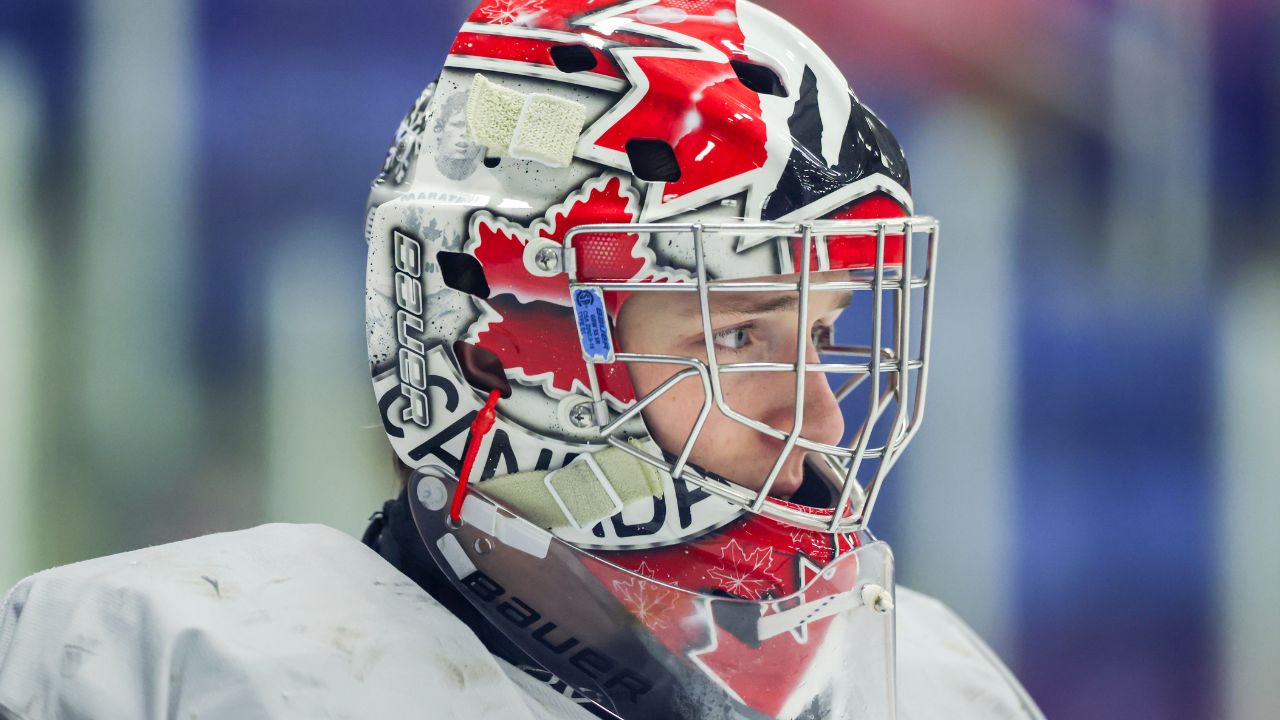
Half the goal is complete.
Amid a well-deserved celebration that Canada had qualified for the 2024 Paris Olympics on Sunday, that was the sentiment of Shai Gilgeous-Alexander. This group, he said, had two aims when they got together for camp at the end of July: Punch a ticket to the Olympics, and win gold at the World Cup.
It took a pair of dramatic comebacks against Spain, but the first part is accomplished. For the first time since 2000, the Canadian men are Olympics-bound.
There may never be a better window for Canada to accomplish that second goal and become champions of the world.
As Olympic-focused as North American sport can be, the World Cup is a bigger, deeper, more difficult tournament, one that’s weighted more heavily in world rankings, and one that truly helps Canada measure itself against the rest of the basketball world. Canada made the quarterfinals a few times in the past, but not since 1994, and they have never made the semifinals, let alone the podium, at this event.
History was made Sunday. History is right there once again.
Let’s see how Canada stacks up.
RANKING THE QUARTERFINALS TEAMS
1. United States
Quarterfinals: vs. Italy on Sept. 5 (8:30 a.m. ET on Sportsnet)
Odds to win tournament: -125
Give me the field over the U.S. at this point, which would have been my thought even before Lithuania defeated them Sunday. And wouldn’t you know it, that loss actually bumped the U.S. to a slightly better bracket setup (and prevented a Canada-USA semifinal). They’re a very good team, not infallible.
The Lithuania loss highlighted what we often assume about American teams in these events: They’re willing to lean on their immense individual talent, even when things go awry. Anthony Edwards scoring 35 points was immense in their coming back and keeping things close late. At times, though, they can look more fluid with play running through Tyrese Haliburton. Brandon Ingram also had a very efficient game and found his role minimized some.
Now, don’t overthink this. The talent is immense. Jaren Jackson Jr. might be the defensive player of the tournament when he can stay on the floor. They played poorly, adjusted slowly, shot mediocre from outside, and still almost came back against one of the five or six best teams in the field. You’d hope tasting defeat is a wake-up call, too, and a better version emerges from here. That’s a scary thought, just not a them-over-the-field thought.
2. Canada
Quarterfinals: vs. Slovenia on Sept. 6 (8 a.m. ET on Sportsnet)
Odds to win tournament: +450
The loss to Brazil was nearly disastrous. It magnified a penchant for Canada to lack urgency for too-long periods of play. That had been true in the first quarter against France and first half against Latvia, too, but Canada was simply talented enough to eventually find their footing. Against Spain on Sunday, they had two short lapses that nearly cost them their spot here, and in the Olympics. In pulling out that double-comeback, Canada assuaged decades of anxiety and also showed that their defensive upside remains the highest in the tournament, and they may employ the best individual offensive player in the event.
Both of those are about to be tested once again. Canada has knocked off the No. 1 and No. 5 ranked countries in the world already, two teams who were in the top five in betting odds to win this entire event. That doesn’t mean everything — team quality is fluid, and betting lines are often reputation-based — but it should leave Canada with little doubt they belong at this stage. Slovenia requires a significantly different gameplan as a far more heliocentric team than any they’ve faced so far.
The capability is there; was Sunday the celebration or just the next step? Better defence from the jump is a must, and Canada has to get more out of their bench than they have in recent games with a few deeper opponents on tap.
3. Germany
Quarterfinals: vs. Latvia on Sept. 6 (4:30 a.m. ET on Sportsnet)
Odds to win tournament: +700
Canada got two good looks at Germany in tune-up games, and the Germans have taken things to an even higher level since games began counting. Led by new Raptors guard Dennis Schroder, who has always been a compelling FIBA player, Germany had arguably the best first two rounds of any team in the tournament, capped by second-round blowouts of Slovenia and Georgia. They also had a large hand in keeping Australia from this stage of the tournament, which is one of the biggest upsets on the board.
Germany is a pretty well-balanced team, with a real layer of toughness and connectivity underneath. They shoot the three reasonably well but don’t overdo it on volume. They don’t get to the free-throw line a ton but also don’t foul much, neutralizing a potential disadvantage. Only Serbia has a better assist-to-turnover ratio. And while they’re pretty conservative crashing the offensive glass, it’s not a size issue, as they defend their own glass well and simply prioritize transition defence. If there’s a hole, it may be a lack of traditional rim protection, the paint protected more by the collective size than any one deterrent.
Schroder, Mo and Franz Wagner, Daniel Theis, and Raptors legend Isaac Bonga are all part of a really fun two-way collective here. It’s unlikely based on the bracket, but a Canada-Germany rubber-match after splitting two exhibitions would be a ton of fun as a championship game.
4. Lithuania (+1600) and 5. Serbia (+800)
Quarterfinals: Lithuania vs. Serbia on Sept. 5 (4:30 a.m. ET on Sportsnet)
Serbia got here with a surgical dismantling of a solid Dominican Republic team on Sunday. In that game, they spammed stack (or “Spain”) actions and made the bet that the Dominican wouldn’t, or couldn’t, adjust beyond their base defence. They were right, and the result was Bogdan Bogdanovic, Stefan Jovic and company running up a blowout. Lithuania presents a much tougher test, both in personnel and scheme flexibility.
It wasn’t just Sunday’s game that was impressive. Serbia scored more than any team except the U.S. in the first two rounds and turned the ball over less than any quarterfinals team. They play a beautiful style of ball, and play it with precision. Despite that, Italy was able to grind Serbia down into a slower game where 3-point variance could rule. Lithuania can do that, too, but they can also score at Serbia’s level while testing a deep frontcourt. Jonas Valanciunas against Nikola Milutinov is an awesome individual matchup here.
Lithuania, meanwhile, have had a tendency to play with almost too much confidence, which can be a good thing for a young team if harnessed properly. Their upset of the U.S. on Sunday showed a strong commitment to a gameplan at both ends and a willingness to take the individual out of it. In addition to Valanciunas, look for Mississauga’s Ignas Barzdeikis and Vaidas Kariniasukas, two big swing pieces in that game.
Lithuania and Serbia are grouped together here because it’s the hardest game to call and the advancing team’s chances of a podium finish shift whether it’s Canada or Slovenia advancing against them. It’s also the one spot I disagree most with the oddsmakers, as Lithuania-Serbia feels more 50-50, with a lean toward Lithuania.
6. Slovenia
Quarterfinals: vs. Canada on Sept. 6 (8 a.m. ET on Sportsnet)
Odds to win tournament: +2000
Something Slovenia can always rest on is having the best player in any given game. Is that still true with the tournament Gilgeous-Alexander is having? It’s close. Luka Doncic has been the tournament’s best offensive player so far; even though he looked potentially banged up in a blowout loss to Germany, that type of offensive talent goes a very long way in a must-win environment. Slovenia is also very creative in turning aggression on Doncic against a defence, layering in a number of actions early in the shot clock and high on the floor to require even great defences to play on a string.
Doncic is flanked by a lot of size, too, as Slovenia plays no players under 6-foot-3 and have 7-footer Mike Tobey manning the middle. Sharpshooter Klemen Prepelic is the key man to mark outside Doncic, as he’s shooting 44.8-per cent on threes in the tournament and is crafty making himself open. Despite those strengths, Slovenia can at times be a bit turnover prone and struggle to defend in transition. We’re splitting hairs at this level, but Slovenia will have to defend better than we’ve seen to date to make an extended run.
7. Latvia
Quarterfinals: vs. Germany on Sept. 6 (4:30 a.m. on Sportsnet)
Odds to win tournament: +7000
Relative to expectation and injury, no team has been more impressive. Down captain Dairis Bertans and presumed top-scorer Kristaps Porzingis, Latvia’s blend of toughness and outside shooting led them to upsets over France and Spain, plus a routing of Brazil on Sunday. Any team that leads the entire tournament in 3-point volume is going to be a threat in any game, and Latvia do well to limit unforced errors, rarely turning the ball over.
Still, Germany will have a major edge on the glass and in shot-creation, and they can match Latvia’s toughness. Even if Latvia advances, the U.S. likely awaits, making it tough to see a moderate underdog story continuing.
8. Italy
Quarterfinals: vs. United States on Sept. 5 (8:30 a.m. ET on Sportsnet)
Odds to win tournament: +4000
This isn’t intended as a shot at Italy, who entered the tournament as one of the favourites from their quadrant and played moderately well throughout. They lost a tough game to the Dominican Republic where — shocker — they had no answer for Karl-Anthony Towns, then made up for that with a minor upset against Serbia where Simone Fontecchio had a candidate for individual performance of the tournament.
Fontecchio is a real problem, and the creativity of ball-handling duo Marco Spissu and Alessandro Pajola are fun, but Italy struggled offensively for long stretches and are the worst 3-point shooting team remaining. They’re not well-suited to take advantage of the U.S. shortcomings that Lithuania poked holes in, so consider them advancing the toughest task of four very well-matched quarters.
The Olympic field so far
Canada and the United States are in as the Americas representatives. The two highest-finishing of the six remaining European teams will make it in, as well.
South Sudan, Japan and Australia were able to qualify by finishing as the best team from the Africas, Asia and Oceania regions, respectively. The qualification is a huge deal for South Sudan, who are the youngest country in the FIBA field, and in the world. Japan was able to emerge victorious on home soil to a raucous crowd. Australia is more or less always auto-qualified, barring disaster, as New Zealand are the only team they had to finish better than.
France is also automatically qualified as the Olympic host, despite failing to make the second round.
How are those last four Olympic spots determined?
From July 2-7 next year, there will be four six-team Olympic Qualifying Tournaments held. The outright winner of each of those tournaments will claim the last four Olympic berths.
It feels pretty good to not be writing about Canada’s chances in one of those winner-take-all environments. They’ve been there, and come up short, far too many times for my stomach. I will not miss it.
Godspeed to the 24 teams participating.
Five of those were claimed via pre-qualifying tournaments this summer: Bahamas (Americas), Bahrain (Asia), Cameroon (Africa), Poland (Europe), and Croatia (Europe). The next three slots go to the highest-ranking non-qualifying team from the Americas, Africa and Asia/Oceania. From there, the next 16 highest-placed teams from the World Cup, regardless of region, will receive a berth.
Based on that, we know that the Olympic Qualifying Tournament field is as follows:
The four groups of six will be determined at a later date, based on a combination of FIBA World Ranking, which countries are hosting the events, geographic balancing principles and random draw.
What is Canada’s FIBA World Ranking now and why does that matter?
We’ll find out in the next week or two. In 2019, FIBA updated the rankings less than a week after the World Cup ended. This is usually the biggest change in ranking every four years, as the World Cup is the most heavily-weighted event in the rankings.
The ranking formula considers myriad factors, including the size of the event, the stage/round of the game, the quality of opponent, the margins of victory or defeat and how long ago the event occurred (the rankings use an eight-year window).
Canada entered the World Cup ranked 15th in the world and fourth in the Americas. Their world ranking should improve dramatically, with the weight given to this event and Canada’s success so far.
This is a pretty big deal. All of those years and tournaments where Canada felt underseeded relative to their talent level, leading to tougher brackets or groups of death? One of the biggest factors at play there was always Canada having a mediocre FIBA ranking, because of their mediocre success in big events. There’s a snowball effect to success, as Canada should be treated — and seeded — as one of the best programs in the world moving forward, making their path to repeat success a little easier.
You know what would really help that ranking? Winning the whole damn thing.


